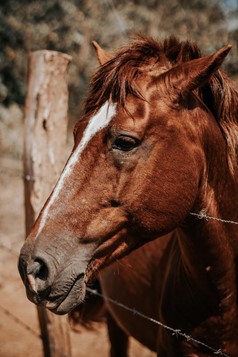The United States of America’s horse racing regulations are known for being stagnant and patchy. However, July 1, 2022, is set to be the date when the sport sees significant changes in the standardization of regulations and enhanced safety measures according to horse law experts. It’s a much-needed adaptation that enhances the jockeys’, horses’, and owners’ wellbeing and improves the sport itself.
From California’s Santa Anita Park to Kentucky’s Churchill Downs, discover how the brand-new Horseracing Integrity and Safety Act will put an end to fragmented rules and regulations currently used in Thoroughbred racing.
The Implementation of The Horseracing Integrity and Safety Authority
December 27, 2020, saw the Horseracing Integrity and Safety Act be signed into law. Set to take effect on July 1, 2022, it is designed to ensure a uniform countrywide standard for thoroughbred racing.
Enforcement power will be given to a number of agencies across the nation, including the brand-new Horseracing Integrity and Safety Authority (HISA) dedicated to governing the thoroughbred racing industry.
The Authority is a nonprofit, independent, private corporation made to define and enforce anti-doping, medication, and racetrack safety regulations for America’s thoroughbred racing sector. Congress has empowered those involved with the Authority to take on such duties.
While they will be overseen by the Federal Trade Commission (FTC), the Authority holds the exclusive right to authorize anti-doping, racetrack safety, and medication control matters for thoroughbred training and racing in the United States of America.
So, Why Change the Long-Standing Rules?
The reason behind the changes stems from ensuring the safety and wellbeing of the sport’s horses, jockeys, and racetracks across the country.
Currently, horseracing is regulated at the state level, meaning everywhere features different rules, racing commissions, budgets, and drug testing. The latter proves to be one of the most damaging because many racetracks simply don’t have the facilities to meet the task of promoting integrity and safety in racing. Therefore, changes to the legislation have to be made to uphold the sport many know and love.
Horseracing Integrity and Safety Authority’s Stampede to a Brighter Thoroughbred Racing Future
Under the Horseracing Integrity and Safety Authority stands two committees — an Anti-Doping and Medication Control Standing Committee and a Racetrack Safety Standing Committee. Together, they’ll work to establish procedural and substantive rules to govern the industry and look to the United States Anti-Doping Agency (USADA) for agreement on drug and medication control.
To make the transition easier, covered people (i.e., owners, vets, racetracks, trainers, etc.) are automatically subject to the rules and regulations outlined by the HISA and the Act.
The Finish Line
While there are still some hurdles to clear, the enforcement of the Horseracing Integrity and Safety Act can’t come soon enough. The majority of thoroughbred racing lovers and participants agree that it’s about time for this change to take place.
Upending the long-standing regulations may cause an upset in the beginning, but with an open mind from the competitors, it’s an adaption that’ll benefit everybody.


